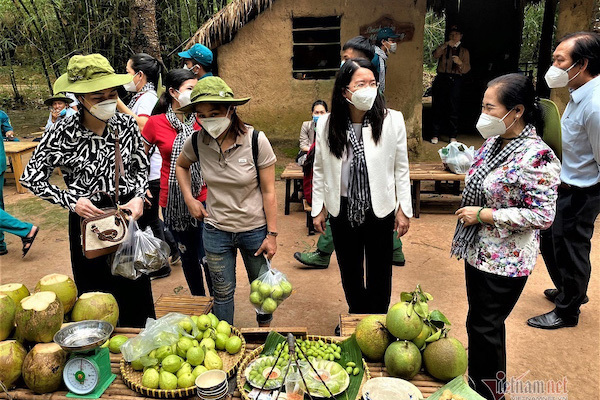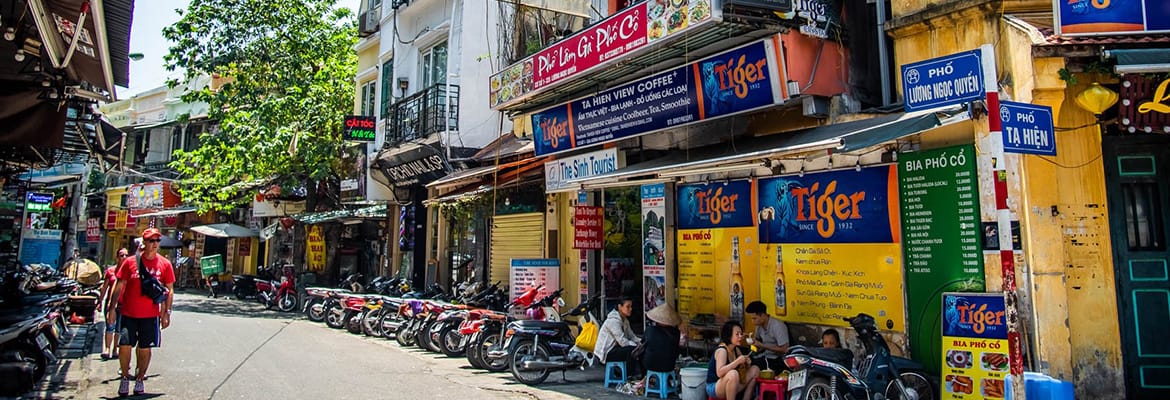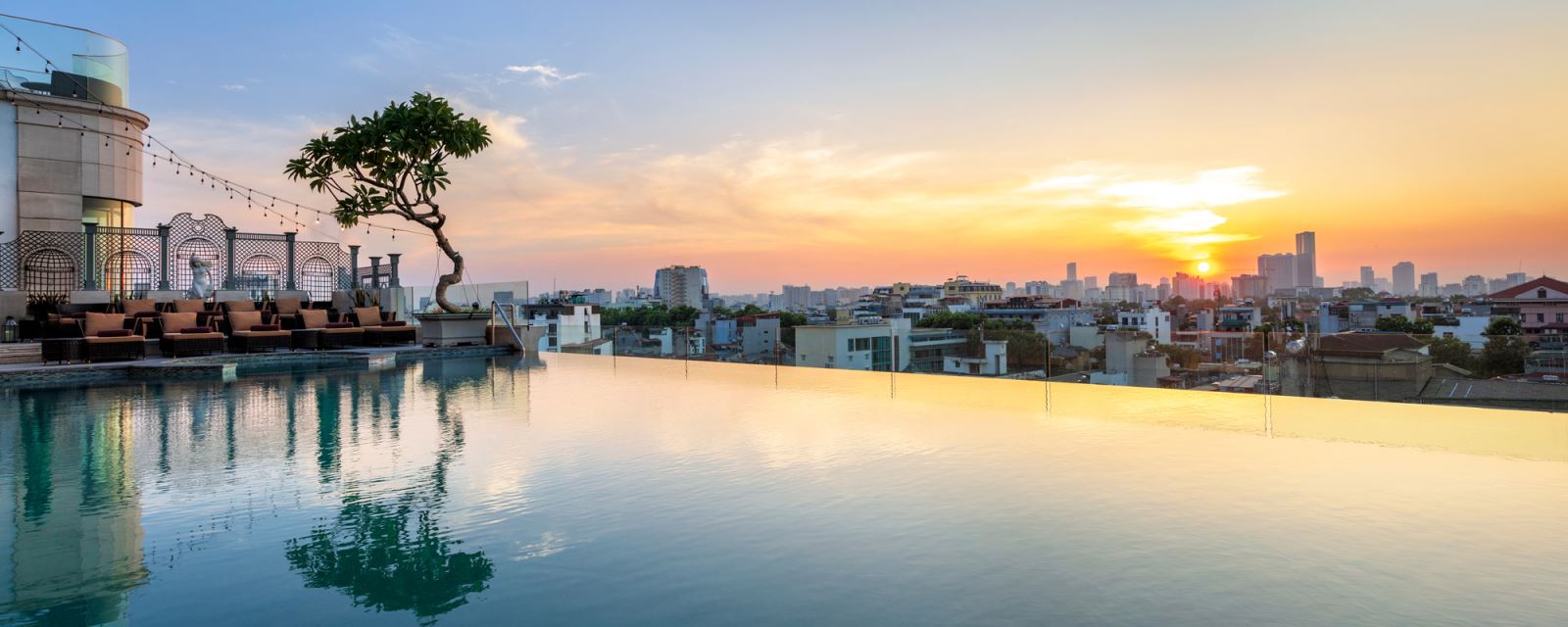I. Introduction to Cycling Mekong Delta
1.1 Cycling the Mekong Delta
Cycling the Mekong Delta, discovering the Mekong Delta’s splendor is like entering a tranquil watercolor picture. You will be immersed in a world of lush foliage, meandering canals, and the kind hospitality of its people as you travel through this enthralling area of Vietnam.
The Mekong Delta, also known as the “Rice Bowl” of Vietnam, is a region where life is centered on the river’s ebb and flow, where floating markets are a riot of fresh produce’s brilliant hues, and where every turn in the bike path provides a fresh, beautiful view.
The Mekong Delta is a monument to the beauty of nature and the rich cultural tapestry created by its residents, with its stunning rice farms and attractive fishing communities.
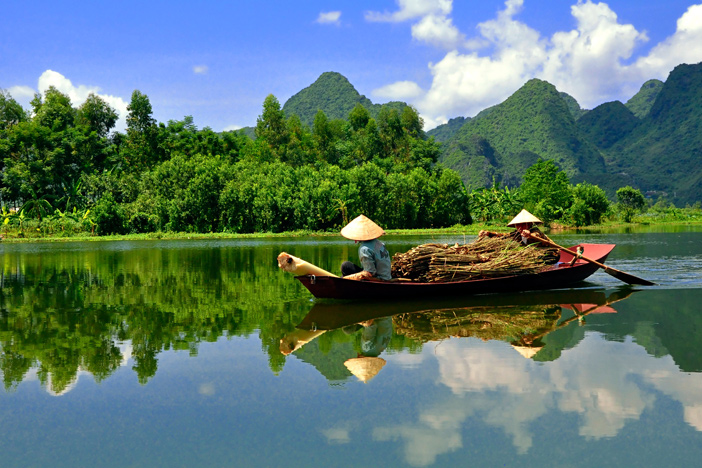
1.2 Why Choose Cycling as Your Mode of Exploration
Cycling provides a rare opportunity to get up close and personal with this alluring location while exploring the Mekong Delta. You may take your time, inhale the fresh air, and fully take in the sights and sounds of daily life along the riverbanks.
Cycling is a flexible and environmentally responsible option to go around curvy roads and find places that other modes of transportation might not be able to reach. You’ll have an opportunity to mingle with people, indulge in delectable street cuisine, and sense the pulse of this distinctive location as you drive.
The Mekong Delta’s beauty and culture may be experienced at your own leisure while cycling, which is more than simply a means of transportation.
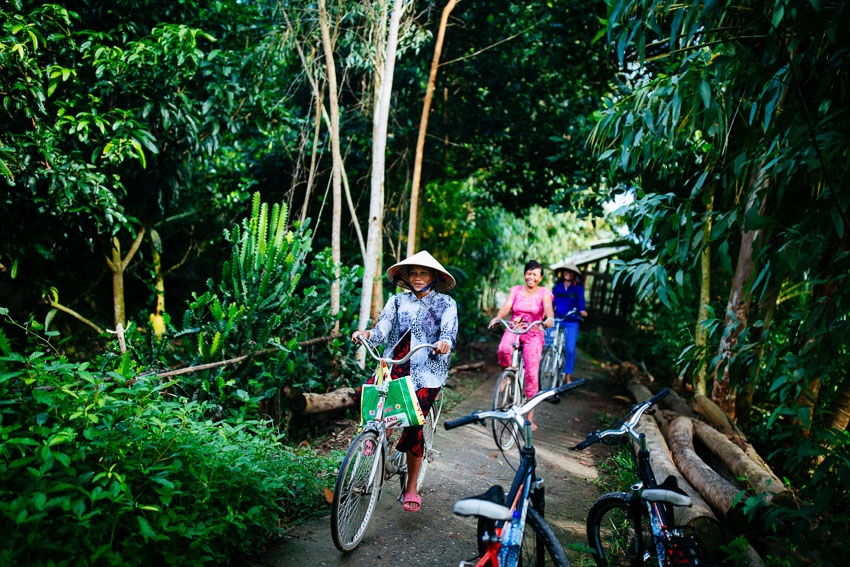
II. Gearing Up for Your Adventure
2.1 Essential Cycling Equipment
The proper gear is necessary for a secure and pleasurable voyage. Your basic necessity is a comfortable, properly fitting bike with dependable brakes and gears.
Also, remember to bring a reliable helmet to protect your head, especially on bumpy terrain. While sunglasses and sunscreen will protect you from the sun’s rays, padded cycling shorts and gloves can increase comfort during extended rides.
It is advisable to have a repair kit containing tools, extra tubes, and a pump to handle any unforeseen problems that may arise. Your cycling equipment list is completed with a high-quality water bottle to remain hydrated and a well-ventilated backpack to store necessities like food, a map, and a first-aid kit, assuring a smooth and delightful exploration of the Mekong Delta.
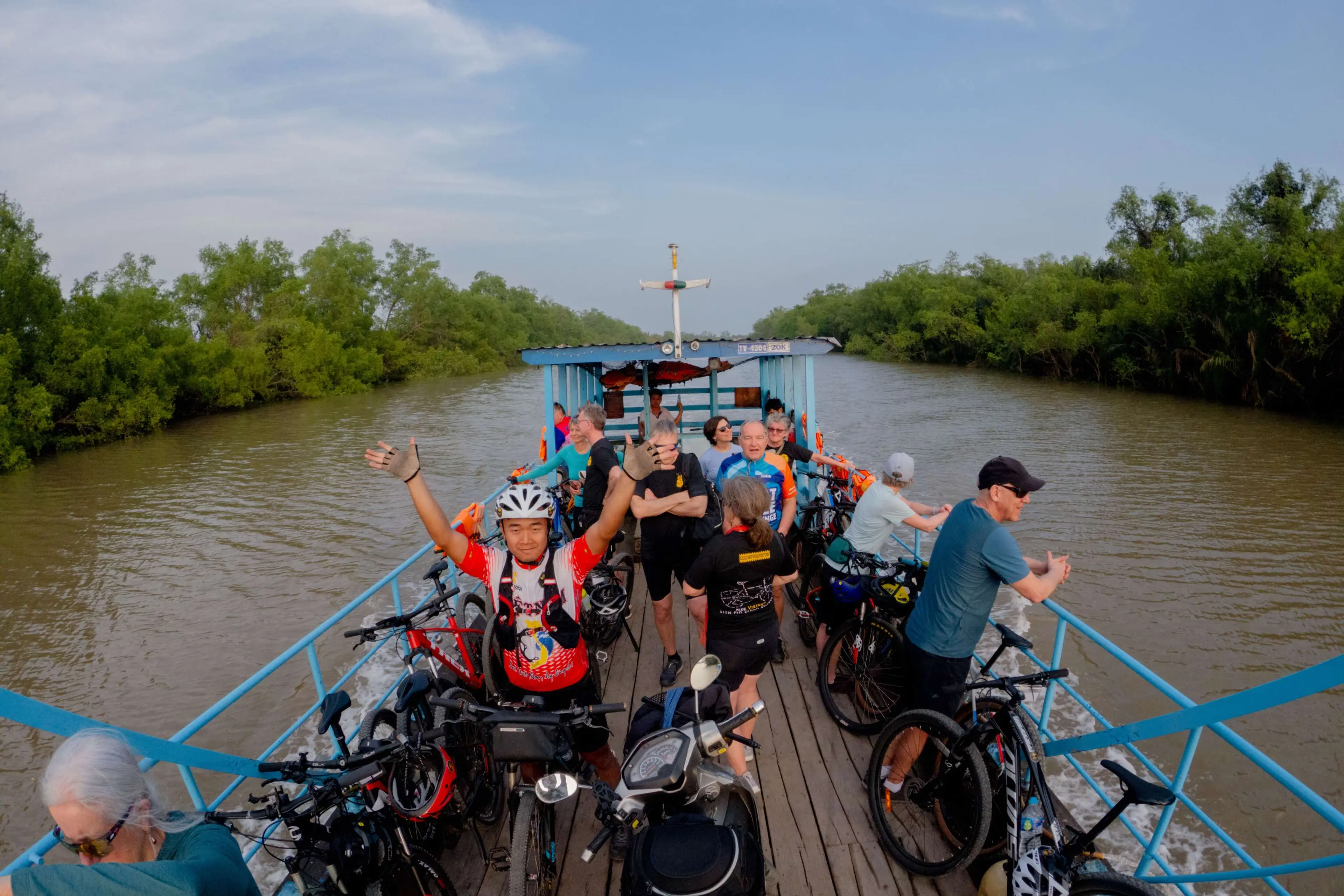
2.2 Safety Tips and Precautions
Especially if you intend to pedal at night or morning, make sure your bicycle is in perfect operating order and equipped with lights for visibility. Helmet use is mandatory since it dramatically lowers the risk of head injuries.
Respect local traffic laws and stay on designated bike paths where they are available. Keep yourself hydrated and shielded from the sun with clothes and sunscreen. Although mingling with the people adds to the appeal, be wary of accepting invitations or offers from complete strangers.
Finally, for increased protection throughout your Mekong Delta cycling tour, include vital safety supplies like a map, first-aid kit, and a fully charged phone in case of emergencies. Also, let someone know your schedule.

III. Exploring the Mekong Delta’s Natural Wonders
3.1 Riding Along the Mekong River
A sensory thrill that transports you to the Mekong Delta’s magnificence is traveling down the Mekong River. The slow pace of life in this area is reflected in the river’s smooth flow, and the emerald-green rice fields and clusters of palm trees that dot the surrounding countryside are breathtaking.
You’ll pass through quaint towns where residents go about their everyday lives while you bike along its banks, and you could even see fisherman tossing their nets into the calming waters.
The Mekong River not only serves as a magnificent background, but also as your constant travel companion as you explore the captivating delta region of Vietnam.

3.2 Scenic Landscapes and Breathtaking Views
At every turn, the Mekong Delta will take your breath away with its spectacular scenery and picturesque surroundings. The calm canals that traverse the delta reflect the verdant rice fields’ vivid green colours as they extend to the horizon.
You’ll cycle across charming wooden bridges with palm trees swinging in the background, revealing traditional stilt homes and hopping marketplaces. In addition to the sometimes occurring sight of water buffaloes and farmers working in the fields, the interaction of light and shadow on the water’s surface creates a captivating ballet of colors.
Cycling through the countryside or along riverbanks, the Mekong Delta’s picturesque splendor is a visual feast that stays in your memory long after your trip is over.

IV. Immerse in Local Culture
4.1 Meeting the Friendly Locals
An fascinating experience that gives your travel depth is getting to know the welcoming residents of the Mekong Delta. The locals will frequently grin and cast you inquisitive looks as you cycle through towns and along riverfront walkways.
Brief exchanges of discussion or a cup of tea with them might reveal details about their everyday life and the diverse cultural heritage of the delta. You’ll experience the real warmth of the people, who might welcome you to partake in customary activities or sample their home-cooked fare.
As a result of these interactions, your tour of the Mekong Delta becomes more than simply a physical journey; it also becomes a cultural and personal adventure filled with enduring memories and significant relationships.
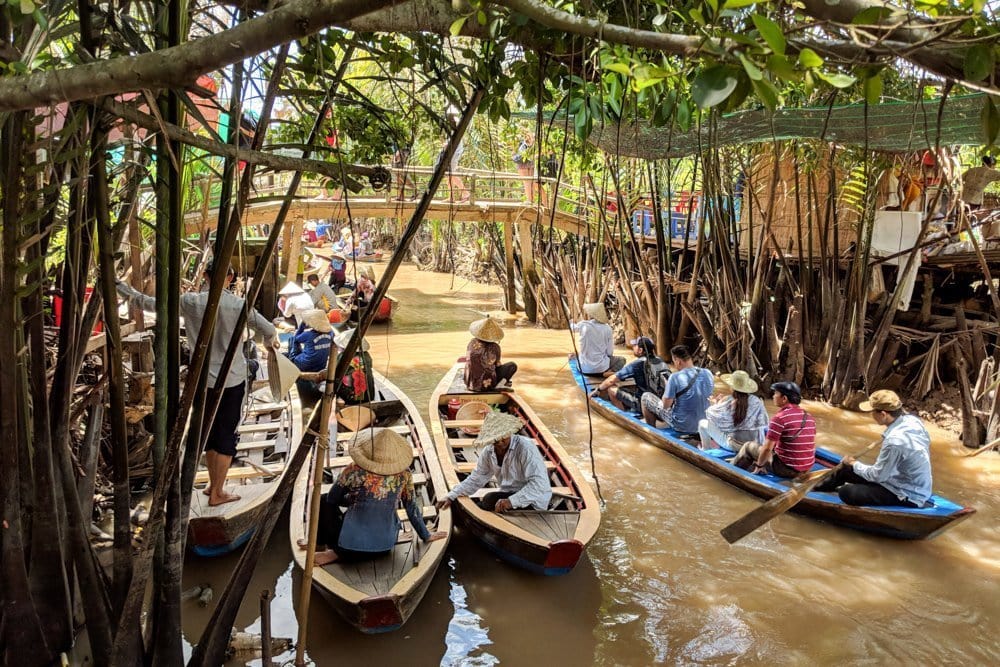
4.2 Sampling Authentic Mekong Delta Cuisine
A gourmet journey unlike any other is trying real Mekong Delta food. This area is well known for its colorful culture and lush fields, which truly reflect in its fresh and varied cuisines.
Enjoy delicacies rich with regional ingredients and tastes, such as delicious fish soup, exquisite spring rolls, and crispy elephant-ear fish. Sweet tropical fruits and fragrant rice cakes are just a couple of the mouthwatering pleasures available at street food stands and floating marketplaces.
It is possible to experience the authentic flavors of Mekong Delta food by dining with locals at a homestay or at a modest riverfront restaurant. This will make your trip through this alluring region of Vietnam unforgettable.

V. Cycling Routes and Itineraries
5.1 Route 1: Delta Delights Trail
You go on an enthralling adventure along Route 1: Delta Delights Trail into the heart of the Mekong Delta’s natural and cultural riches. This bicycle path meanders through the lovely riverbanks, going through small towns where you may mingle with the kind residents and verdant rice paddies.
You’ll pass through vibrant floating markets, ancient temples, and beautiful panoramas that display the delta’s amazing grandeur as you go. This path offers an exceptional experience that perfectly embodies the spirit of the Mekong Delta. It is a beautiful combination of scenic exploration and cultural immersion.
5.2 Route 2: Riverside Villages Expedition
Route 2: Riverside communities Expedition provides a close-knit and all-encompassing look at the lovely communities of the Mekong Delta. This cycle path meanders through the center of riverbank towns, giving you a close-up view of real daily life.
You’ll be able to engage with the people, who will greet you with warm grins as you ride past traditional wooden cottages on stilts and see artists creating elaborate handicrafts. You may stop at roadside kiosks along the way to sample local food and cool yourself with fresh coconut water.
The cultural diversity of the riverfront communities in the delta is explored in-depth throughout this adventure, leaving you with lifelong memories of your tour through this colorful environment.
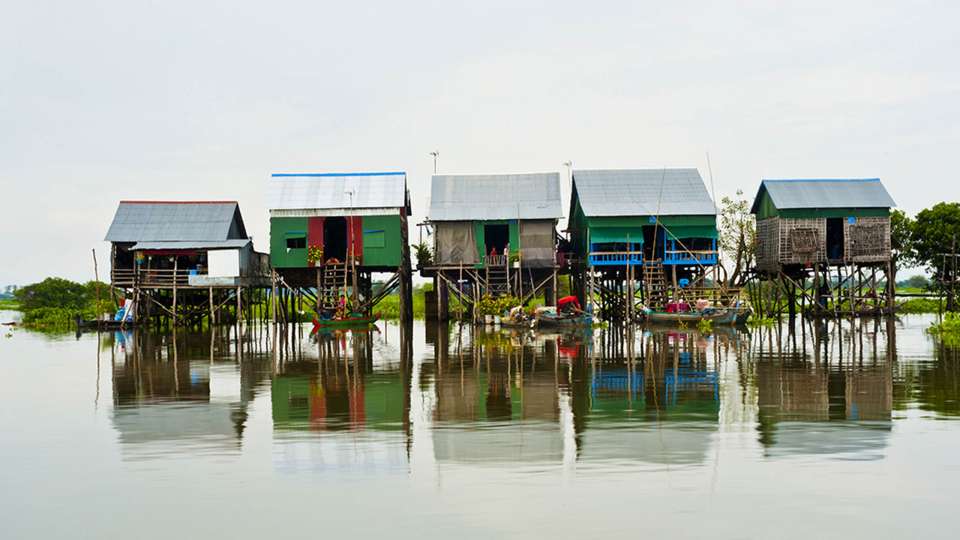
5.3 Route 3: Delta Discovery Loop
For those looking for a comprehensive tour of the Mekong Delta, Route 3: Delta Discovery Loop is the ideal option. This cycling route, which takes the form of a loop, passes through a variety of settings and sensations, from tranquil riverbanks to busy markets and lush orchards.
You’ll pass through historical landmarks, obscure temples, and unmatched natural treasures that demonstrate the variety of the delta as you go. The Mekong Delta’s culture, history, and stunning beauty will all become clear to you as you cycle around this fascinating loop, making the trip worthwhile and unforgettable for any tourist.
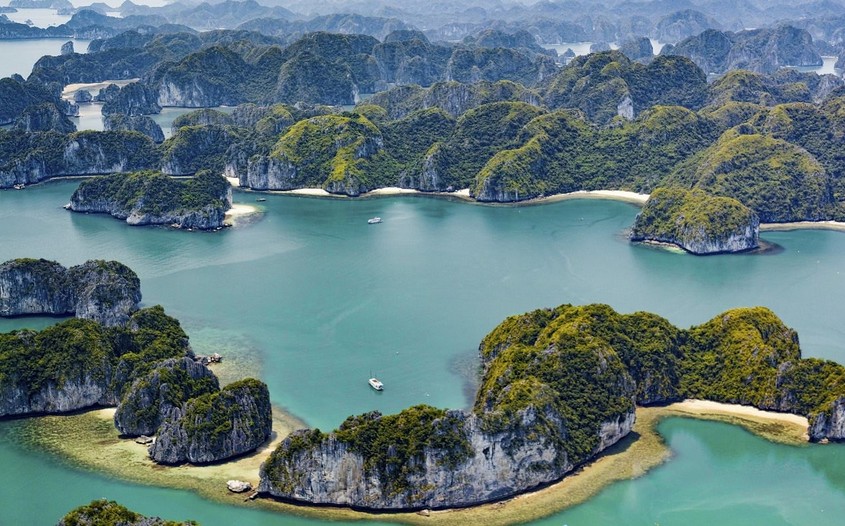
VI. Accommodations and Staying Local
6.1 Charming Guesthouses and Homestays
The Mekong Delta’s charming guesthouses and homestays provide a singular opportunity to encounter genuine local hospitality and become immersed in the culture of the area.
These lodgings offer a warm and friendly ambiance, frequently hidden away in tranquil natural locations or inside charming towns. You may interact with welcoming hosts who are ready to share their customs and way of life by staying in guesthouses and homestays.
It’s an opportunity to experience authentic Vietnamese cuisine, take part in local activities, and make lifelong memories while relaxing in a warm and welcoming environment in this scenic region of Vietnam.
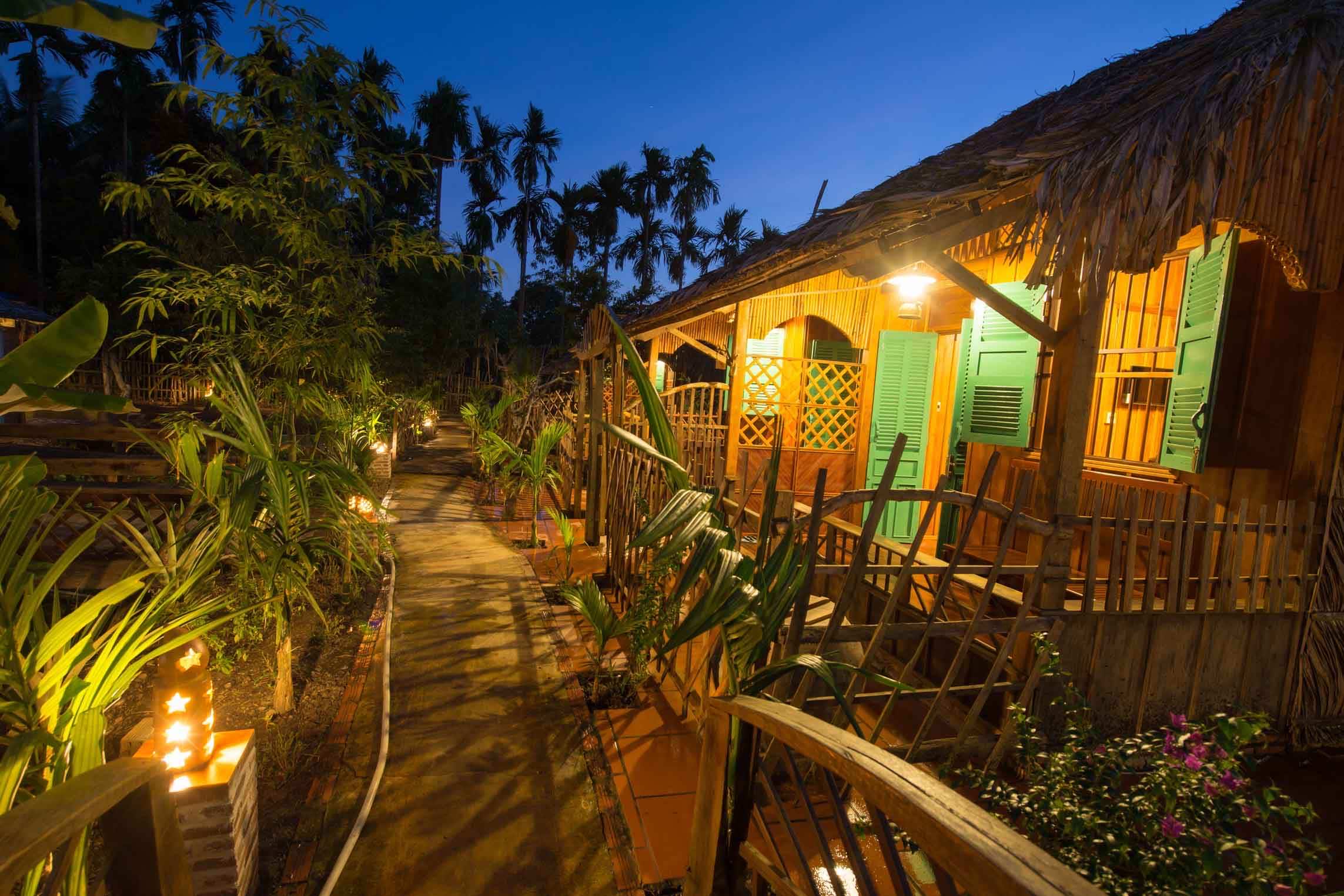
6.2 Tips for Responsible Tourism
To maintain the Mekong Delta’s beauty and culture, ethical tourism is crucial. First and foremost, respect the local traditions and practices, especially when you go to temples and other holy places. To preserve the environment, properly dispose of garbage and limit the use of plastic.
To lessen your carbon impact, use eco-friendly transportation methods like electric boats or cycling. By purchasing handcrafted trinkets and dining at neighborhood restaurants, you can support local craftsmen and businesses.
Last but not least, make a good influence on the community by volunteering or assisting regional programs to make sure your trip has a beneficial and long-lasting effect on the Mekong Delta and its inhabitants.

VII. Navigating the Delta’s Waterways
7.1 Ferry Crossings and Waterborne Adventures
The Mekong Delta’s complicated network of rivers and canals may be explored in part by taking ferries across them and engaging in other water-based activities. The opportunity to experience the distinctive transportation culture of the delta, where busy ferries connect villages and floating markets come to life, is provided by these crossings.
As you cruise by colorful fishing boats, you’ll see locals bartering items on the water and take in beautiful river vistas.
Consider taking a boat journey through the maze-like waterways of the delta for an immersive experience. These waterways may take you to undiscovered jewels like serene orchards and endearing riverside communities. Your tour of the Mekong Delta gains a magical depth when you navigate the aquatic realm of the delta.
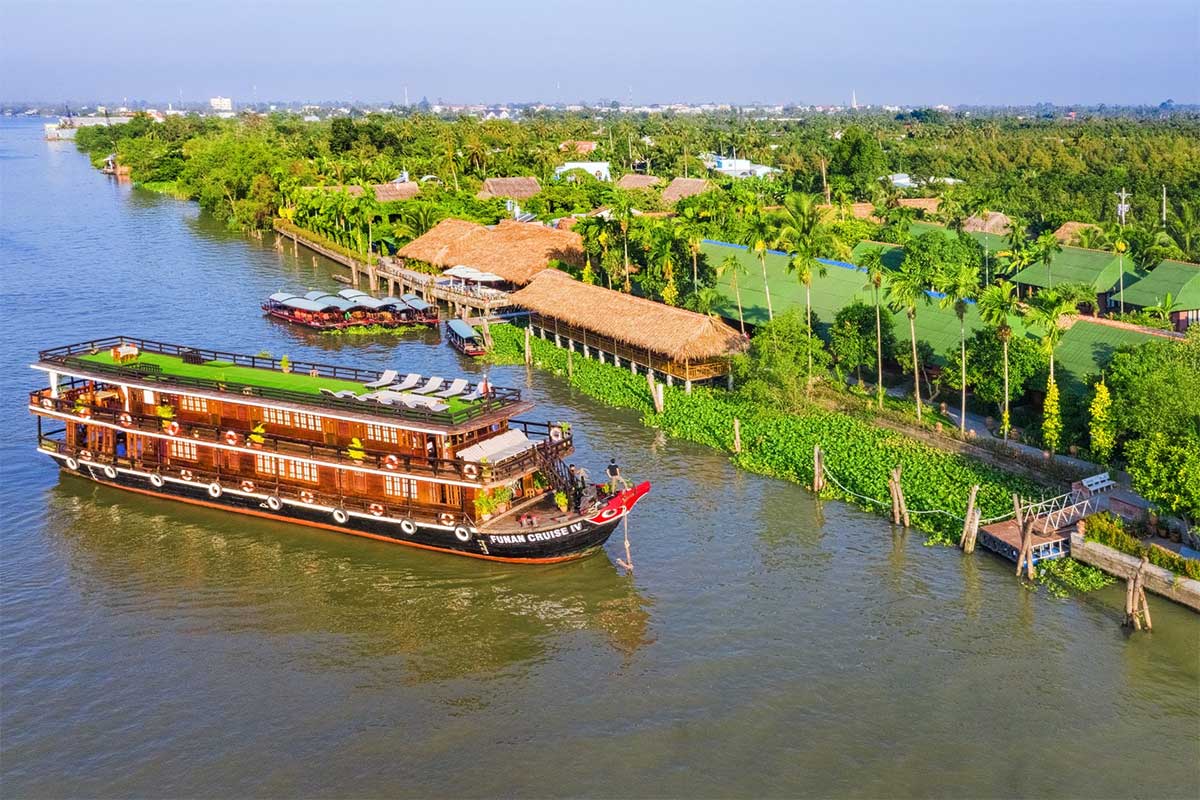
7.2 Boat Trips and Floating Markets
The Mekong Delta is famous for its boat tours and floating marketplaces, which give visitors a peek of the region’s thriving commercial and cultural center.
As you float down the lake, you will pass crowded floating marketplaces where vendors sell a wide variety of fresh goods, from tropical fruits to fragrant spices. These marketplaces offer a visual spectacle and a special chance to meet locals.
Along with passing stilt homes, rich vegetation, and peaceful rice fields, leisurely boat cruises also take you through beautiful scenery. Boat tours in the Mekong Delta are a need for any tourist, whether they are bargaining for exotic fruits or simply taking in the peace of the river.
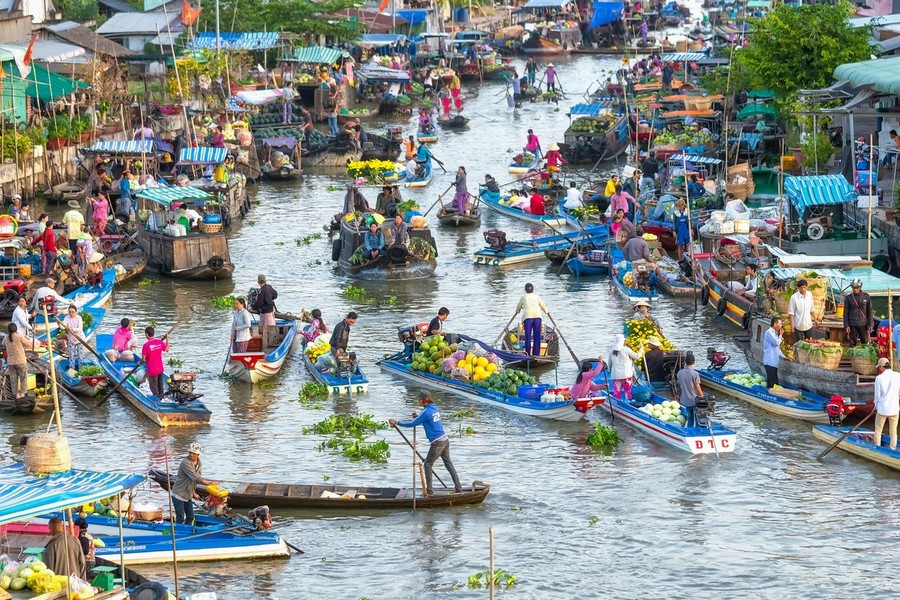
VIII. Experiencing Festivals and Traditions
8.1 Joining in Local Celebrations
A dynamic and comprehensive cultural experience may be had by participating in neighborhood festivities in the Mekong Delta. The delta’s calendar is jam-packed with holidays and occasions that honor customs, spirituality, and ties to the community.
These festivities, which range from vibrant lantern festivals to exciting boat races, offer a special view into the area’s rich tradition. As a participant, you’ll get a warm greeting from the community, take part in customary ceremonies, and savor delectable regional cuisine made especially for the event.
These times of celebration and cultural interaction are not only priceless but also a means to connect with the Mekong Delta’s heart and soul.
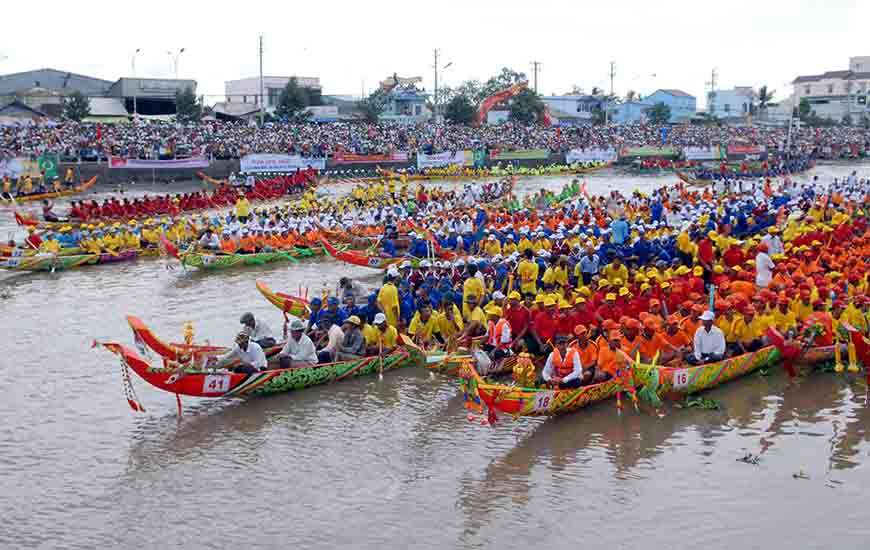
8.2 Seasonal Highlights
The Mekong Delta’s seasonal attractions provide visitors with a vibrant and constantly changing scenery. The delta’s rich vegetation and low water levels during the dry season make it the perfect place to go cycling and explore rice terraces.
However, the rainy season completely changes the area by overflowing the rivers and canals and establishing a vibrant aquatic habitat.
This is the ideal time to take boat trips and see the magnificent floating marketplaces in action. Regardless of the time of year, each trip to the Mekong Delta has its own special appeal and offers a chance to view the region’s natural beauty and cultural life in a new way.

IX. Practical Information and Travel Tips
9.1 Best Times to Visit
The dry season, which runs from November to April, is considered the greatest time to explore the Mekong Delta in Vietnam. You may anticipate good weather with decreased humidity and little to no rain throughout these months, making it perfect for outdoor pursuits like cycling and enjoying the delta’s scenery.
But bear in mind that this is also the busiest travel period, so congested places could be. The wet season, which lasts from May to October, delivers vivid streams and lush flora as well as regular downpours and sporadic flooding.
This time of year may be tempting to visitors looking for a more sedate atmosphere and a unique view of the delta, but it’s important to be ready for sporadic inclement weather.
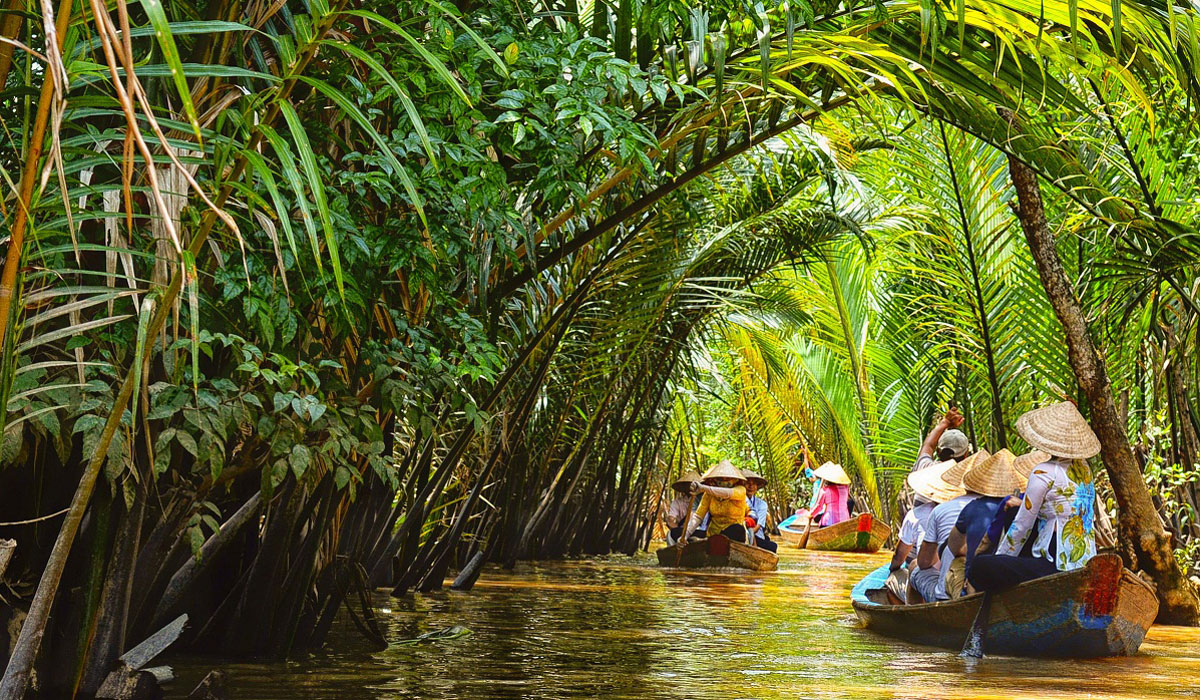
9.2 Getting to the Mekong Delta
The Mekong Delta may be reached by a variety of modes of transportation, making it a rather simple process. The majority of tourists begin their trip by flying into the closest major airport, Tan Son Nhat International Airport in Ho Chi Minh City.
From there, you may choose between a picturesque bus journey to destinations like Vinh Long or Ben Tre for a more affordable choice or a domestic flight to may Tho or Rach Gia for a speedier route.
Buses, boats, and even rented motorbikes are all convenient ways to travel about the delta after you’ve arrived. The mode of transportation you choose will depend on your tastes and the exact locations in the Mekong Delta that you wish to see.
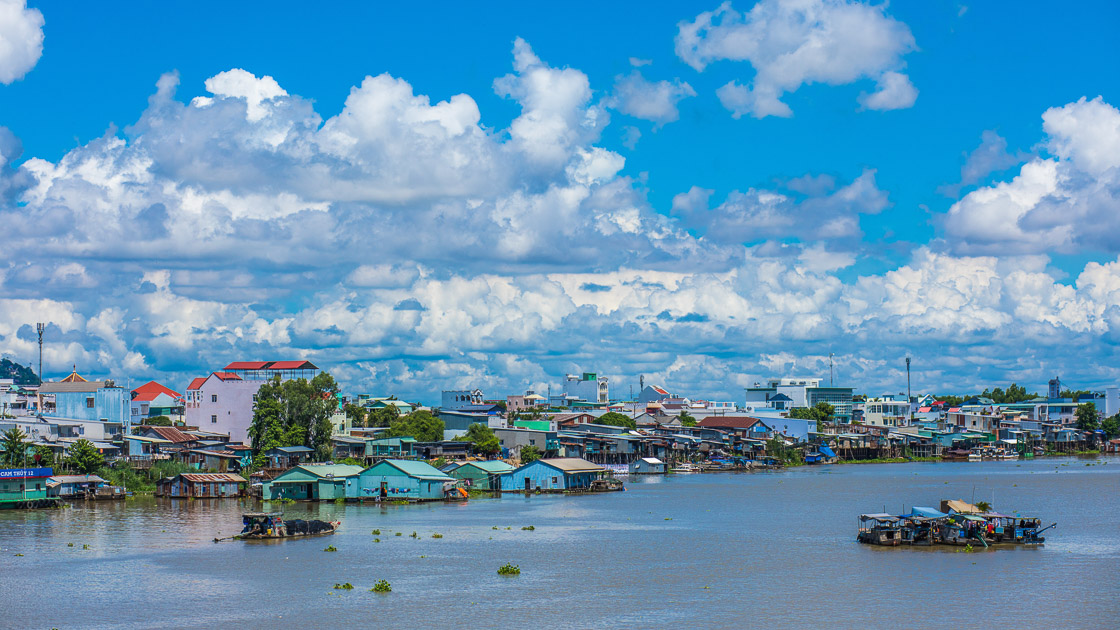
9.3 Packing Essentials
It’s crucial to carry a few basic goods for your trip to the Mekong Delta. A must-have item of apparel for the tropical environment is lightweight, breathable clothes. Don’t forget to protect yourself from the sun by wearing comfortable walking or cycling shoes, a hat with a broad brim, and sunglasses.
For your comfort and safety, you also need a reusable water bottle, bug spray, and sunscreen. It is acceptable to wear modest clothes that covers your shoulders and knees when visiting temples or other sacred places.
A basic first aid kit, any essential prescriptions, and a travel adaptor for your electronic gadgets should round out your luggage. To ensure a hassle-free and pleasurable tour of the Mekong Delta, pack lightly and use common sense.
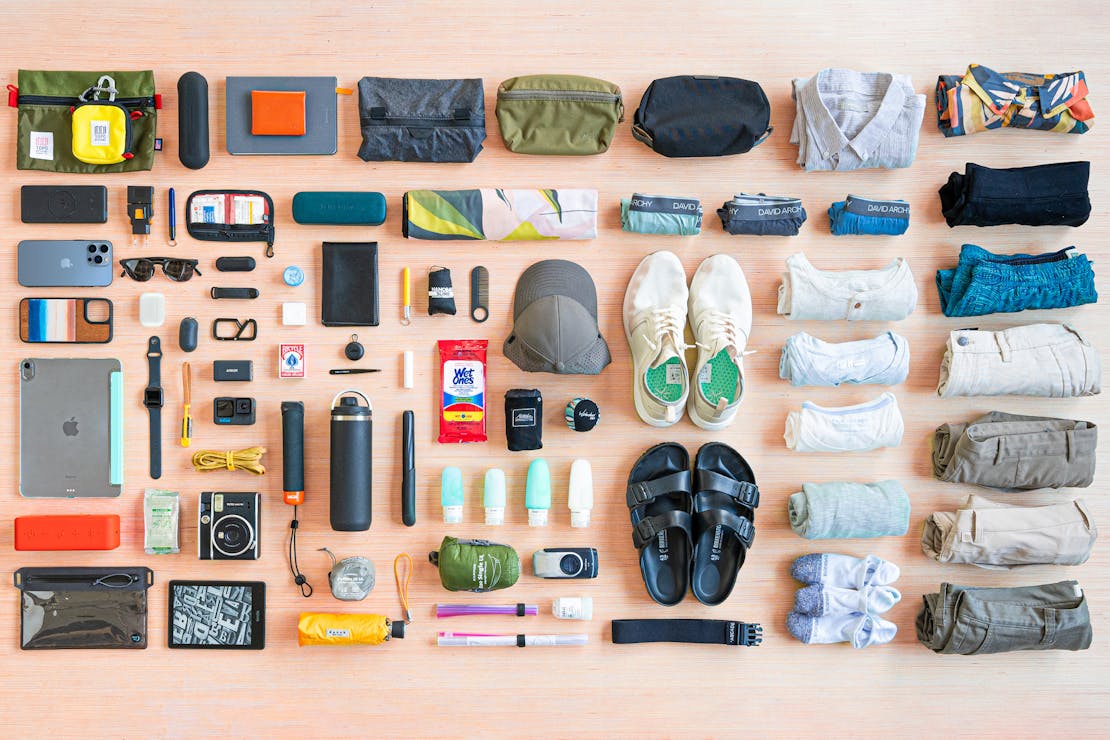
X. Safety and Health Considerations
10.1 Staying Safe on the Road
Cycling through the Mekong Delta safely on the road is essential. To protect yourself from head injuries, start by using a helmet at all times.
Ride carefully and in accordance with the law as road conditions might change. Wearing bright or luminous clothes will make you more visible, especially if you plan to ride at dusk or dawn. Be cautious when traveling on rural roads since they might contain unforeseen hazards like potholes or stray cattle.
Finally, keep a fully charged phone, identification, and emergency contact information with you just in case. You may really enjoy your Mekong Delta riding journey with peace of mind by putting safety first.
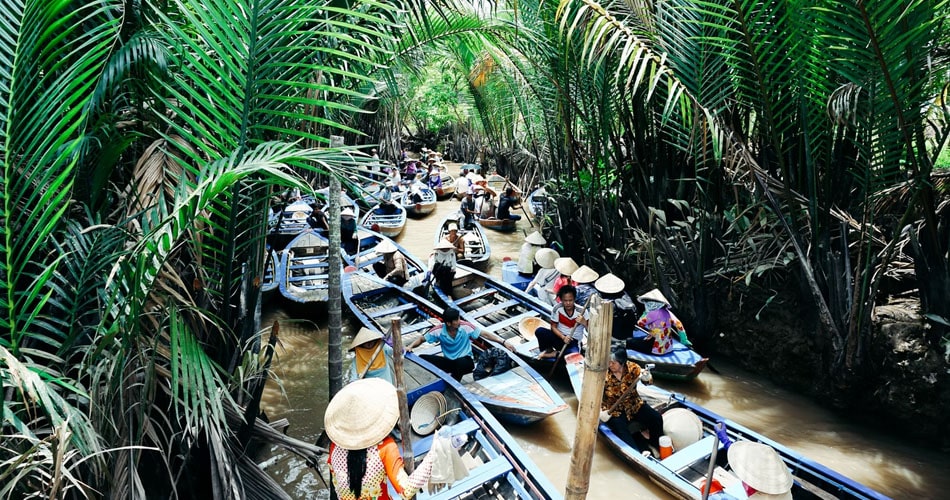
10.2 Health Precautions and Vaccinations
You should speak with a travel clinic or your doctor about the needed immunizations and safety measures before traveling to the Mekong Delta. Hepatitis A and B, typhoid, and tetanus vaccines are typically advised.
You could also think about getting immunizations against illnesses like rabies and Japanese encephalitis, depending on your individual travel plans and hobbies. Carry a basic medical kit that has the necessary drugs and supplies for common illnesses as well.
To avoid foodborne infections, use caution while handling food and drink. Choose bottled water and well prepared, hot meals. You may reduce health hazards and have a safe and healthy trip across the Mekong Delta by following these health measures.
